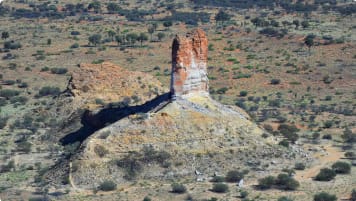The Australian Overland Telegraph Line
Article on the Australian Overland Telegraph Line, that connected Port Augusta with Darwin and thereby Australia overseas to England and the wider world. Learn more on a small group tour for senior and mature couples and solo travellers visiting Central Australia including Uluru-Tjtuta.
27 Feb 21 · 17 mins read

The Australian Overland Telegraph Line
By Marco Stojanovik
One of the greatest engineering achievements of the nineteenth century, the Australian Overland Telegraph Line, connected Port Augusta with Darwin and thereby Australia overseas to England and the wider world. Despite almost overwhelming odds, on 22 August 1872, the line more than 3,000 km long was finally connected through country that had only been crossed once, that was for the most part uninhabited by white people, and that had one of the most inhospitable climates in the world.
The men worked by hand in temperatures that often exceeded 35 degree Celsius in the shade, through country that often had no shade, and across diverse terrains including mountains, flood plains and desert. Holes were dug for the timber poles, themselves cut from nearby durable trees or hauled in overland by bullock teams, strung through by the slender thread of wire.
The finished result was a transformation of life in the Australian colonies as Australia was brought in from its isolation by the means of rapid communication. Suddenly communication between Sydney and London could be done within seven hours at a time when letters could take more than three months to travel the same distance. It was little short of miraculous.
This article explores the fascinating tale of the construction of the telegraph line. An epic tale of courage, endurance, and high adventure, it tells the story of intercolonial rivalries, discovery, hardships and setbacks, and ultimately triumph. Information for this article is sourced from Peter Taylor’s book An End to Silence, Glenville Pike’s journal article “The Northern Territory Overland Telegraph: an epic of courage – just 100 years ago”, and sources linked to throughout.
The Tyranny of Distance
In the early decades of the Australian colonies, communication across the continent was a long and difficult process. Most Australian were remote from each other, with cities hundreds of kilometres apart and very little population in between. With radio and telephone still not invented, communication meant the written letter, which had to be physically transported. This made communication between cities painfully slow, no quicker than the man who carried it or the ship that took it around the coast.
Australia’s remoteness also made it isolated from the rest of the world. Communication overseas was so slow that events may well have made the contents of a letter or newspaper irrelevant and outdated by the time it arrived, although the recipients had no means of knowing this.
Ships carrying letters between Sydney and Great Britain, the place that many settlers considered their homeland, took about 3 months and often longer. With delays to shipping it could be nearly a year before a reply was received. Even with improvements to the efficiency of shipping in the 1850s, the communication turnaround was still about four months.

At the time, the colonies were almost totally dependent on Great Britain for manufactured goods, finance, government, and even people. Australian exports such as the wool clip, wheat, gold, and other minerals went almost exclusively to there, and the price they fetched largely determined the well-being of most Australians. For commercial and social reasons, there was a dire need for constant communication with Great Britain.
Simultaneous developments of electric telegraph technology in Britain and the United States offered a revolutionary means to break this tyranny of distance. The first patents were registered in 1837 and by 1851 there were more than 50 companies operating telegraph lines across the United States. Australia’s first telegraph line began operation between Melbourne and Williamstown in 1854, and within four years Sydney and Melbourne were linked to Adelaide.
Soon new technology was slowly linking not just cities but countries across the world: in 1850 a successful cable was laid across the English Channel to France; in 1865 the first successful trans-Atlantic cable reached between Ireland and Newfoundland; and by 1870 England had been linked with faraway places such as Japan and Java. The possibility to link the existing system in Australia with the international system, thereby radically decreasing Australia’s isolation from the rest of the world, was now within reach.
Crossing the Continent
Whilst the international systems were certainly getting closer to Australia, they were getting closer to the wrong part. Long sea cables were horrifically expensive and unreliable, and bringing a cable underwater from Indonesia to Melbourne or Sydney was never a serious proposition. The link would have to take place on the north coast of Australia, and then joined via an overland telegraph line to either the east coast, or south through the centre of the continent to Adelaide.
Competition between the colonies over the route was fierce as they recognised the economic benefits that would come with being the centre of the telegraph network. The only problem was that nothing was known of the centre of Australia. Previous exploration had been limited to relatively short distances from existing settlements, in most cases just in search of new pastoral land. No one had actually crossed the continent yet, and no one knew what the centre contained. This would have to be known before a line could be built.
In 1860, the Victorian government organised an expedition led by Burke and Wills to find out, attempting to cross the centre of the continent from Menindee in the south to the Gulf of Carpentaria in the north. When the expedition perished in the desert in 1861, traversing the interior safely seemed impossible.

Still, the South Australian government had offered a reward of £2000 in 1859 to the first person to cross the continent and reach the north or north-western coast. And a man by the name of John McDouall Stuart was determined to be that person. Stuart was a well-established explorer, having previously accompanied Captain Charles Sturt on his expedition to central Australia and conducted numerous expeditions of his own throughout South Australia.
He failed however in his first two attempts at finding a north-south route. Dwindling resources, failing health, dense bushland and confrontations with hostile Indigenous peoples forced him reluctantly turn back both times.
However, the final expedition of the explorer would prove successful: following a traditional route linking waterholes, created and travelled by Aboriginal people for millennia, Stuart reached the Indian Ocean at Chambers Bay on the North coast (near present-day Darwin) on July 24, 1862. He marked a tree with his initials, JMDS.
On the return journey, Stuart was so weak from scurvy that he had to be carried on a stretcher. He arrived in Adelaide on 17 December. On a public holiday on 21 January 1863, banners hung from buildings and crowds filled the streets to celebrate the man and his accomplishment. Historian Peter Taylor comments on the significance of his feat:
“He had last shown that the continent could be crossed and, of great importance, that enough water could be found to support men and beasts. Suddenly Australia knew what the interior was like – areas of usable land, and no inland sea. A harsh, dry land with searing heart, but one that might be tamed.”
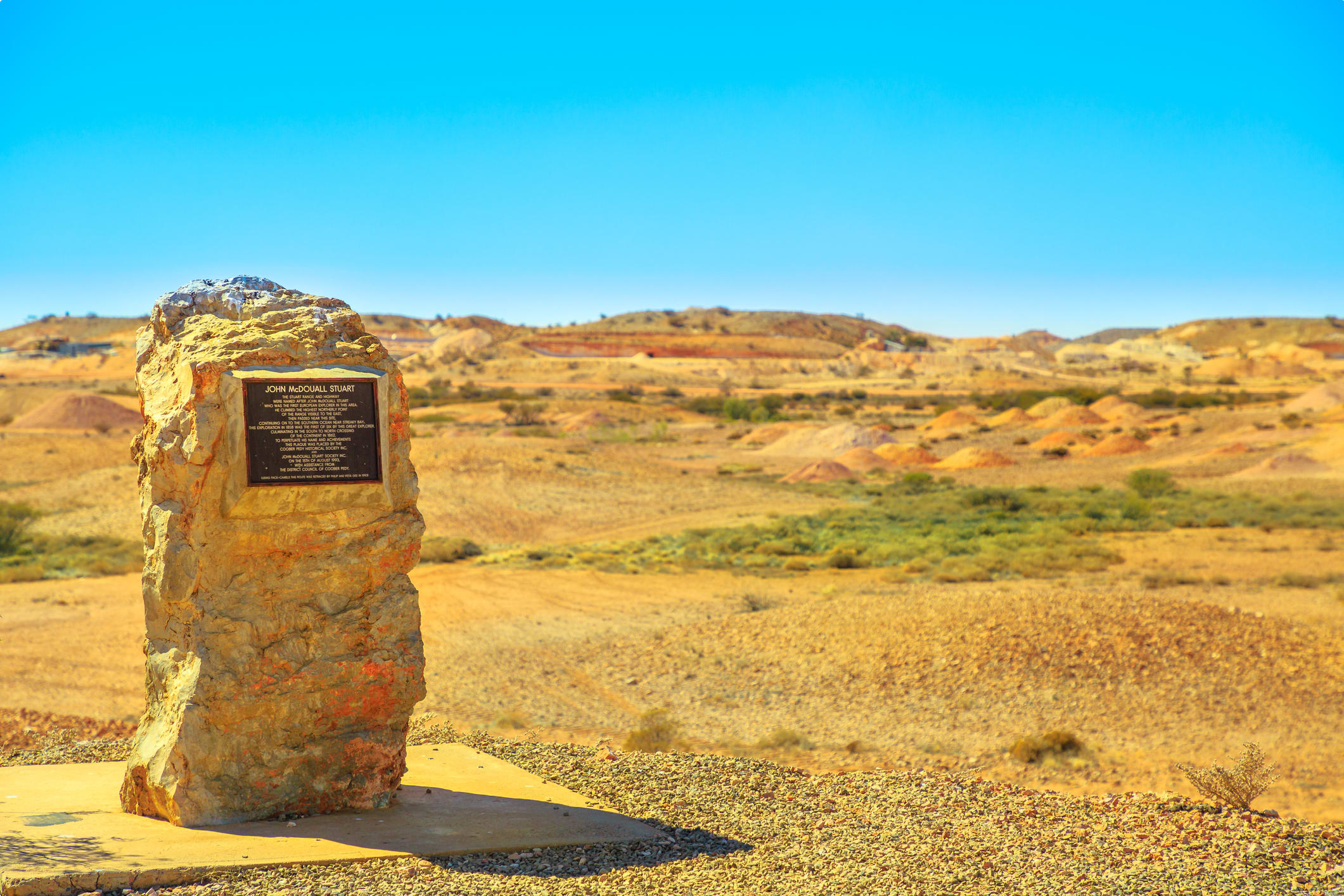
The Battle for the Job
Stuart’s successful crossing of the continent now confirmed that the overland telegraph route was indeed practical. With the proposed telegraph line in mind as he travelled across the desert, Stuart had noted the best places for river crossings, sources of timber for telegraph poles, and water supplies. Upon his return her reported that his route “could be made nearly a straight line for telegraphic purposes”.
By the late 1860s, it had become obvious that the main contenders within Australia to connect the northern coast to the international telegraph system would be South Australia and Queensland. Intense inter-colonial competition raged.
Queensland established a Northern outpost, Burketown, at the mouth of the Albert River in 1865, and in 1867 found Normanton as a proposed connection point to Java. Meanwhile, South Australia, in 1865, had authorised the construction of a telegraph line between Adelaide and Port Augusta, 300km to the North. Determined to forestall Queensland, it then established its own Northern outpost at Port Darwin in 1869, having been given the vast land of the Northern Territory after Stuart’s successful journey. Anxious for the line to connect here, the state saw the telegraph as a means of establishing a northern settlement and opening up the endless country in between.
South Australia thus strengthened its position by being the only colony to control an entire north-to-south route. In 1870, the state secured a contract with the British-Australian Telegraph Company, undercutting the company’s discussions with Queensland, by agreeing to pay for the construction of a 3200 km telegraph line between Port Augusta and Darwin. In return, the British-Australian Telegraph Company agreed to lay an undersea cable from Java to Darwin to connect it to the world.
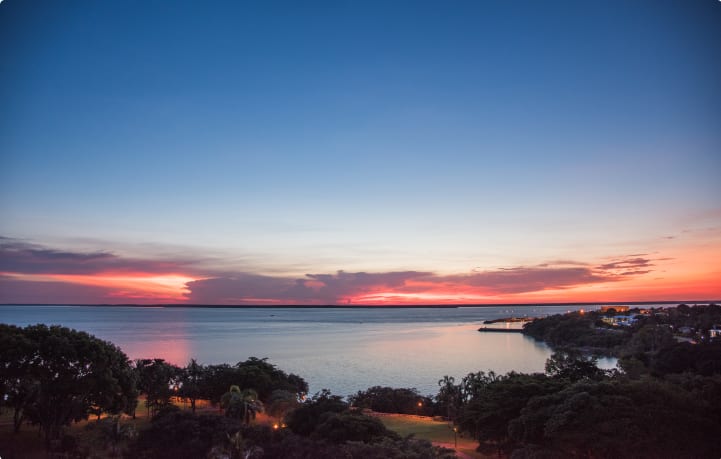
Planning the Construction
The management of the project was given to Charles Todd, the South Australian Superintendent of Telegraphs. Todd had arrived in South Australia in 1855, at a time before telegraph lines were in the country, with his wife Alice, who in an interesting case of telecommunications bedfellows was the daughter of Alexander Graham Bell (inventor of the telephone). Within a short time, Todd had successfully constructed South Australia’s first line and extended it between Adelaide and Melbourne. A vocal proponent of the feasibility of the route between Darwin and Port Augusta, he had now committed to constructing the line in only 18 months and with a budged of no more than £128,000.
Peter Taylor explains the magnitude of the task:
“The commitment was really quite staggering. They had undertaken to build a telegraph line three thousand kilometres long through country about which they knew nothing other than what Stuart had told them nearly eighty years ago, and which was unoccupied by white people for 2,250 kilometres. What they did know was that the country was dry, with long stony deserts and sandhills running at right angles to the route, that there were no tracks, that most of it contained little timber for poles, and that every item of equipment, food, building materials and other stores would have to be carted most of the way.”
The line would require 37,000 iron poles, along with insulators, batteries, wire and telegraph equipment imported from England. Poles were to be placed 80 km apart and a repeater station built every 250 km. A team of surveyors, linesman, carpenters, labourers and cooks were required; and the materials, food and supplies had to be transported to the workers by bullocks, horse drawn wagons, and Afghan cameleers.
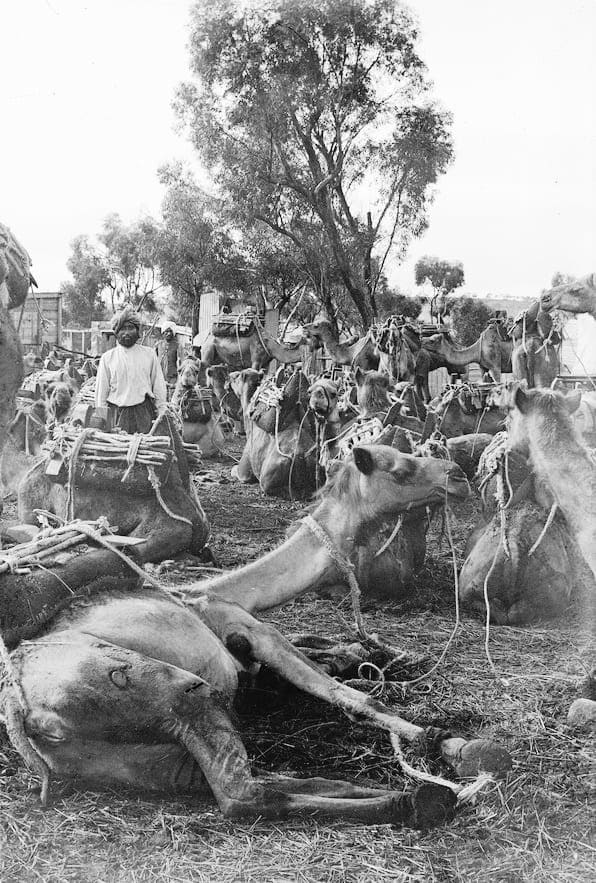
The only way Todd could envisage the project being completed was by dividing it into three 900 km sections – southern, central, and northern – to be worked on simultaneously: from Port Augusta to the Teuer River; from the Teuer River to Tennant Creek; and from Tennant Creek to Port Darwin. The South Australian Government was to be responsible for the remote 1000-kilometre central section, while the southern and northern sections were to be handed by private contractors.
The southern section proved the easiest to build due to its relative proximity to settlements: the land had already been completely surveyed and supplies were nearer to hand. In the unknown terrain of the centre and north, however, hurdles soon arose.
A Route is Needed for the Central Section
From the outset the central section was considered the most difficult of the three. It ran through 960 km of inhospitable terrain that had only really been explored by Stuart. The weather was fiercely hot, the water scarce, and there was not one European living in the whole of its length.
Normally on a project of this type surveyors would have been sent out beforehand to map the route, but with a limited timeframe this was not possible. Instead, the explorer John Ross, his second in command Alfred Giles, and their team were sent out to check the terrain in the southern parts of the Northern Territory. Journeying only a little ahead of the advancing construction team, they were tasked with finding a suitable route through the MacDonnell Ranges for heavy transport with enough water and gum trees for timber.
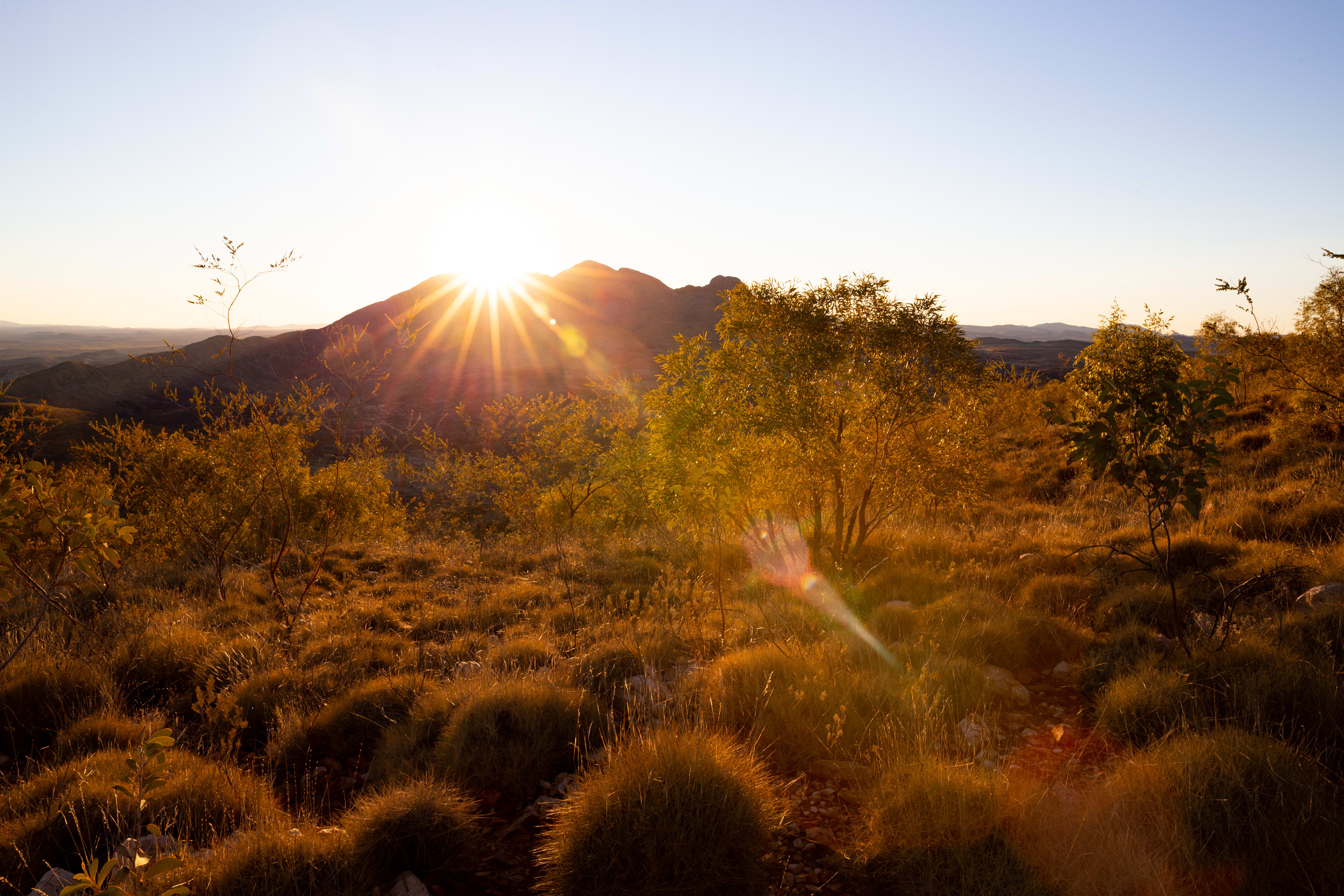
Ross and his men first went north directly into what would later be named the Simpson Desert, but changed directions after it became evident that there was insufficient water to be found for the following parties. Going south they went west of their previous route, discovering the Todd River, Phillipson, and Giles Creeks, and then eastward into the Ferguson Ranges. Still unable to find a suitable path, from here they returned to base camp at The Peak by the way of the Hugh and Finke Rivers.
Reflecting on the difficulties, Giles here wrote:
“From our experience, so far as we had been and seen of the interior, it meant facing tremendous and unforeseen difficulties. It was impossible to guess when and where the two ends of the wire would be joined, but in any case it would been trial of Australian pluck and endurance, and an accomplishment any colony would be proud of.”
After reporting their findings to Charles Todd, Ross and his team were sent out again. Crossing the Ferguson Ranges, they made it to central Mount Stuart – only the second Europeans to sight it since it was named ten years earlier. They then crossed the MacDonnell Ranges at Brinkley’s Buff on 13 January following Stuart’s track, which was already known to be unsuitable for the telegraph parties as it lacked sufficient water. Ten weeks after leaving The Peake, they eventually reached the new base at the junction of the Hugh, a weary and hungry party.
With the path had still not found, A.T. Woods and Gilbert McMinn, overseers for the central section, decided to search for a route themselves, also directing sub-overseer William Mills to examine the land along the Hugh. McMinn found Temple Bar on February 17 and the following day was at Simpsons Gap, where he became bogged and stuck for a week due to bad weather. He decided to turn back for camp, but before leaving climbed a hill on the east side of the Gap and found he could see for about 50km to the east.
Informed of this, Mills then made his way quickly north and was soon through the MacDonnells, moving east from Temple Bay along the country that McMinn had seen from Simpsons Gap. Here, finally a way through to the northern plains was found with surprising very little difficulty. Peters writes:
“It was perhaps something of an anticlimax that after all their effort the route through the MacDonnells should, in the end, be so easy. But its importance was in no way diminished because of that, for the way was now open to the north and the men, bullock drays and equipment would now be able to move up to other sections.”

Disaster in the North
In September 1870, Darwent and Dalwood, contractors for the northern section, arrived in port Darwin aboard the little steamer Omeo, laden with men, horses, drays, bullocks and equipment for construction. The first telegraph pole was erected on 15 September and in 54 days they had built 143 km of line over very difficult country, cutting through desolate and dry bushland and eucalyptus forest.
Then it rained. While Darwent and Dalwood could cope with the dry stages they could not prepare for the wet, having had no experience of it. Plans simply failed to recognise that the whole of the county would flood, and there would be no way around it.
Further north the country turned into a swamp, and no wagons could get more than a few miles out from Darwin to take supplies to the forward camps. As the rains increased, with severe electrical storms day and night accompanied by monsoon rains roaring down from Java way, even packhorses could not get through the bog or swim the raging rivers. Even on the odd day when the rain ceased, it was so humid that food went off and much of it useful by the time it eventually reached the construction parties.
The men camped at the Katherine were starving, stocks reduced to just a little of weevilly flour, and many of them were ill with fever and dysentery. The Katherine itself was flooded, with nothing to be done but to wait at camp and hope the rain would stop.

But, still raining three weeks after arriving, Engineer Paqualin, the man in charge, knew that work would have to be pushed on. So he made the men build rafts and they ferried themselves and all the equipment across the swollen Katherine and somehow got the line of poles erected southward to the King.
For ten days, in steaming heat and drenching rain from severe thunderstorms, the men had axed dense bush, sank post-holes, and cut and snigged poles, while their horses and bullocks floundered and bogged. They did so without tea, sugar, salt, tobacco or grog, the last of the stinking weevilly flour eaten, and team bullocks killed for food.
By this point they had had enough. They realised that it was unlikely any supply team would follow them across the Katherine (if they could even reach the Katherine in the first place) and the further south they went, the further they would be from provisions. After toiling from sunrise to sunset and clearing 362 km of line in four months under the worst possible conditions for only $2.50 per week, the rebellious gangs threw down their tools. Theirs would be the first labour strike in the Northern Territory.
With the cessation of work, William McMinn, Government Overseer in the North, sailed in the schooner Gulnare around the continent to Adelaide with the bad news. With the situation thought irretrievable, Darwent and Dalwood’s contract was declared void.
The Government Takes Over Construction in the North
On July 11 1871, with only five months left in which to compete the line, the South Australian Government decided to take over construction in the northern section. Four months of the dry season in North Australia had now been wasted, and by August, the northern and southern ends were still some 600 miles apart.
Assistant-Engineer R. C. Patterson was sent north from Adelaide with one hundred men, 170 horses and 500 team bullocks to save the line. But again, there were major issues. He reached Port Darwin in the blistering heat of the dry season: the country was burned base by bushfires, there was no grass for horses or bullocks, and long stages of construction were waterless. As a result of the unaccustomed heat, a third of bullocks died and horses collapses.
Then once again the wet season set in. Thirty-eight inches of rain fell south on Katherine in December and January. The horses and bullocks, which had been dying of starvation and thirst only a few weeks before, now drowned in the flooded rivers or bogged so badly they had to be shot. Makeshift camps were soaked and some of the men went down with fever. Food ran out and there were insufficient medicines. And with the Gulnare wrecked and unable to take stores to the Roper River to teach them, they were unable to be relieved.
Patterson, his hopes in ruin, knew that he must call for help, however distasteful that might be. On 25 October, the Curacao left Port Darwin with Patterson’s message for Todd:
“The Telegraph Expedition is breaking down through excessive loss of stock by deaths at Port Darwin, through disasters attending the passage of the dry country between the Katherine and the King and through knocking up of stock generally.”
Patterson requested thirty teams of bullocks or horses to be landed at the head of the navigation of the Roper in order to reinforce supplies and help prevent complete disaster for South Australia’s dream for the Overland Telegraph.
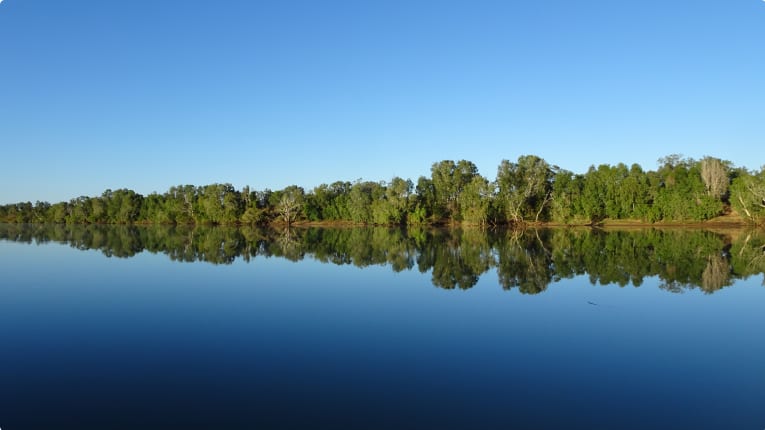
Todd immediately sailed from Adelaide upon receiving Patterson’s desperate plea for aid and reinforcements, taking eighty horses and stores with him aboard the stout little Omeo. Behind him followed the sailing ship Tararua with another eighty horses below deck, and the paddle-wheeler Young Australias, all bound for the Roper River.
It was a terrible voyage through the teeth of a cyclone and storm-lashed seas, but the vessels successfully navigated the seas and then down the flood-swollen river to land horses and stores at Leichhardt Bar. From here, 50 packhorses were sent floundering through flood and bog as far south as Daly Waters to save the construction gangs from utter starvation.
Success at Last
The undersea cable meanwhile finished earlier than expected, the line reaching Darwin from Java on 18 November and being connected the following day. The men had been saved in the north but with the rainy season in full force construction could not continue, and the deadline of 31 December was missed, the line still over 300 km short.
The Queensland Superintendent of Telegraphs called for the abandonment of the project and to instead connect the line to the terminal at Burketown. Todd was adamant, however, and the work went on. By late March the wet season had eased off south of the Katherine and wagon wheels began turning again. Once more axes were cutting a path through the coolabahs and bullwaddy and the line of poles carrying a single galvanised wire were sent crawling south to Daly Waters.
While the men worked like demons to close the gap between north and south, the line became substantially in use from May 1872 through the use of Australia’s “pony express”. With messages carried by hard riding horses and camels across the uncompleted section, Adelaide and Sydney finally received their first telegrams from Europe.
Day by day the distance between the two ends of the wire were shortened, as did the rides of the “Pony Express”. Finally, on August 22 1872, the telegraph wires were joined at a lonely spot by dense lancewood scrub, 600 km south of Darwin.
Todd was given the honour of sending the first message along the completed line:
“We have this day, within two years, completed a line of communications two thousand miles long through the very centre of Australia, until a few years ago a Terra Incognita believed to be a desert.”
Glenville Pike comments on the significance of this achievement:
“One of the greatest projects of Australia’s pioneering days had been brought to a successful conclusion at a cost of great hardship by courageous workers, bushmen, horsemen, and technicians… Australia had achieved its first modern communication with the outside world.”
Whereas previously it had taken anything from two to eight months for news to reach Australia from England by sailing ship, messages could now be flashed across the world by wire in a matter of hours.
The line was an immediate success with more than 4000 telegrams transmitted in its first year of service. Telegraph offices soon became centres of trade, where information and banking were transacted and orders places.
The telegraph line also worked to open up the centre of the continent. Gold discoveries brought mining to several places along the northern section, particularly in the hills of Pine Creek. The repeater stations were used as starting points from which prospectors and graziers could explore and stake claims on the land. And the original Ghan railway followed the same track as the telegraph line, helping to transport people into these newly staked lands.

Tour of the Overland Telegraph Line
Odyssey traveller visits the numerous sites of the old Overland Telegraph Line during out 18 day tour of the Flinders Rangers and Oodnadatta Track. This Australian outback adventure takes you to the well-known sights along the Oodnadatta track including Curdiminka and Farina, as well as an in-depth tour of the majestic Flinders Ranges – Wilpena Pound and Flinders Ranges National Park – but also to lesser-known gems, including Brachina Gorge, Parachilna Gorge, Bunyeroo Gorge, which we see and explore on a collection of day trips.
Beginning at the old railheaf od Marree, a number of abandoned small towns and railway sidings sit along the Oddnadatta Track. Marree is the end of the line for the rail from Port Augusta and the long journey from channel country for the cattle driven down the Katherine track. It was once a bustling centre of outback commerce, the most north railhead located at the crossroad of major overland trade routes. During the late 19th century and early 20th century, Marree famously provided a home base for Afghan camel drivers who helped with the construction of the Overland Telegraph and railways.
Further along, the Curdimurka Siding is a particularly fascinating spot, holding a long history as a key location on the old Overland Telegraph Line from and the original Ghan Railway. The Curdirmurka siding remains intact and the railways building, desalination plant, water tower, fetters cottages, and Stuart Creek Bridge are all still standing in reasonable condition dominating the flat landscape. There are still rail lines too as well as a never-ending line of scattered remains of both telegraph and track.
The track’s remote namesake town of Oodnadatta has a big history as a trading stop and railway town for the Old Ghan. As South Australia’s most northerly railway town, it was the starting point for travellers heading to the Northern Territory, and a major railhead for cattle. By 1893 there were some 50 Afghans based at Oodnadatta working 400 camels in every direction from the town. A Chinese community also flourished, setting up market gardens at Hookey’s Hole on the Neales River.
Our small group Australian Outback tour allows you to see and explore the ancient Flinders Ranges landscape – more than 600 million years old. We learn about the Aboriginal culture and history, dating back 60,000 years, and reflect on the history of European settlement in the 18th and 19th centuries along the way at Oodnadatta, William Creek, and Marree, as well as the ghost towns of Curdimurka and Farina where the legendary stockman Stanley Kidman brought his cattle out from the Channel country. We also see a diversity of abundant natural wildlife all in their natural habitat or South Australia’s extraordinary vast ancient landscape.
Articles about Australia published by Odyssey Traveller:
- The Kimberley: A Definitive Guide
- Uncovering the Ancient History of Aboriginal Australia
- Aboriginal Land Use in the Mallee
- Understanding Aboriginal Aquaculture
- Mallee and Mulga: Two Iconic and Typically Inland Australian Plant Communities (By Dr. Sandy Scott).
- The Australian Outback: A Definitive Guide
For all the articles Odyssey Traveller has published for mature aged and senior travellers, click through on this link.
External articles to assist you on your visit to the Oodnadatta Track and the Flinders Ranges:
Related Tours
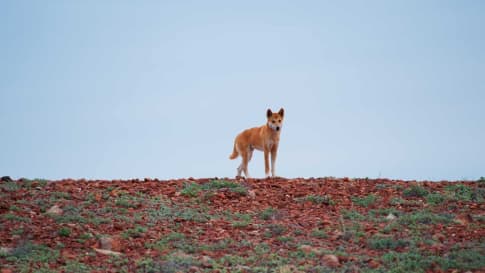
days
Apr, May, Jul, Aug, Oct +2Small group tour of Australia's Flinders ranges
Visiting South Australia
Escorted small group tour of the Flinders range in South Australia from Adelaide. Learn about Coober Pedy, Wilpena pound and water system of Lake Eyre as we explore and learn also about the history of the people who explored the Flinders.

days
Jun, Jul, Sep, Feb, Mar +1Darwin and Kakadu small group tour
Visiting Northern Territory
Explore and learn as part of a small group tour for seniors on this package tour to Darwin and Kakadu National park, a UNESCO world heritage site. This program also visits Arnhem land. Our focus is on ecology, landscapes and history on this 14 day program in the far north of the Northern Territory.
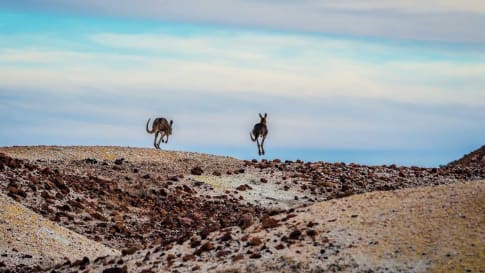
13 days
Mar, OctSmall group tour; Broken Hill and back
Visiting New South Wales, Queensland
Small group tour of New South Wales, Queensland & South Australia deserts, from Broken Hill. Learn about the history of the people who explored the deserts, from indigenous communities to Europeans, as well as Burke and Wills, visit White Cliffs, Birdsville, Maree.
From A$11,550 AUD
View Tour
days
Feb, Apr, May, Jun, Jul +3Small group Motorcycle tours; Broken Hill and back
Visiting New South Wales
Small group tour of New South Wales, Queensland & South Australia deserts, from Broken Hill. Learn about the history of the people who explored the deserts, from indigenous communities to Europeans, as well as Burke and Wills, visit White Cliffs, Birdsville, Marree. Explore the outback by motorbike limited to 8 riders.

days
Feb, Mar, Apr, May, Jul +2Small group Motorcycle tour of South Australia
Visiting South Australia
Escorted small group tour for senior motorcycle riders of the Flinders range in South Australia from Adelaide. Learn about Coober Pedy, Wilpena pound and water system of Lake Eyre as we explore and learn also about the history of the people who explored the Flinders.
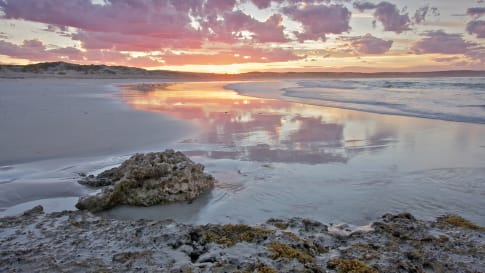
15 days
Sep, Dec, Jan, Feb, Mar +2Eyre & Yorke Peninsulas, and the Gawler Ranges
Visiting South Australia
Small group tour South Australia. Yorke, Eyre, and Gawler Ranges, discover the local history.
From A$10,350 AUD
View Tour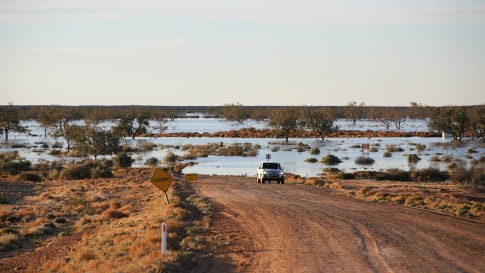
65 days
MarLong tour of Australia for a small group
Visiting New South Wales, Northern Territory
Small group tour for senior couples and solo travellers touring Australia. Travelling through the outback and visiting many of the famous sights as well as off the beaten track locations. Learn about the history of the people who explored the deserts, from indigenous communities to Europeans, as well as Burke and Wills, visit White Cliffs, Marree and far north Kakadu and the Kimberley.
From A$48,995 AUD
View Tour


